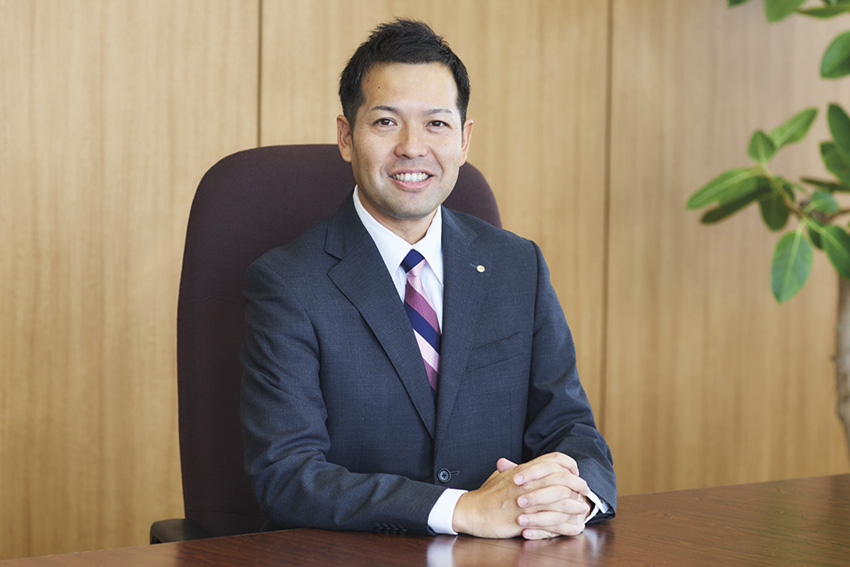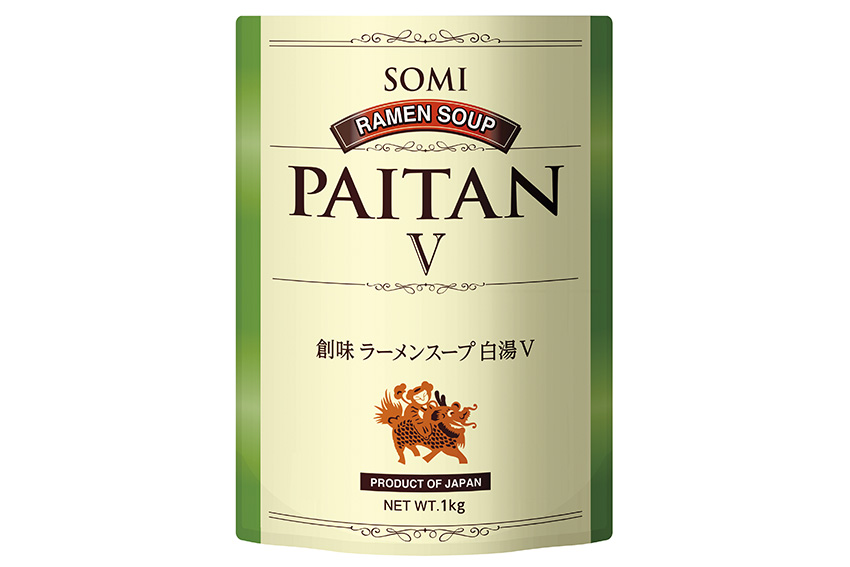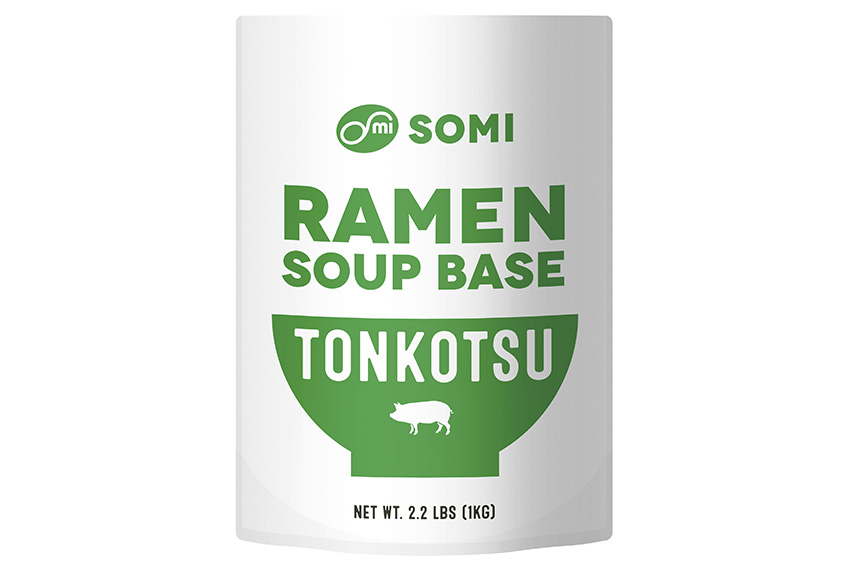
For eleven consecutive years, food-related exports have been at record-breaking levels, hitting JPY 1.45 trillion by 2023. And the same thing has been happening with Japanese food globally, with the number of Japanese restaurants going from 55,000 in 2013 to 200,000 in 2024. How do you account for the continued rise of Japanese food exports and the growth and popularity of Japanese food in recent years?
There are two reasons I can see. The first one is from the Japanese point of view. When I visit various countries and whenever I eat Japanese food there, it reminds me that Japanese food is really delicious. The second reason is that there are more opportunities for people to encounter good Japanese food. The number of foreign visitors to Japan is increasing, as are the number of Japanese restaurants, as you mentioned. Those are two important touch points for customers to discover good Japanese food and are a trigger for more exports of Japanese food around the world.
This kind of growth has been a catalyst for government action, including a pivot towards a more globally focused and proactive policy, including the establishment of the Japan Food Products Overseas Promotion Center and initiatives like the Global Foodstuff Export Project. These are funneling more resources into infrastructure, overseas marketing, and human resource development. The country now aims to push its food exports to JPY 5 trillion by the end of the decade. Do you believe this target is achievable by 2030, and if so, what steps must be taken to achieve this goal?
I believe there is a possibility to achieve that. We believe that there are some issues or the challenges we are facing. Japan’s population is shrinking, so we will have a difficult time in the domestic market. That’s why restaurant businesses and food manufacturers are trying to establish themselves in overseas markets, though not so many companies are achieving good results yet. What is needed is for those companies who already have business overseas to achieve good results that can serve as a good example for others to follow.
When it comes to exports, we have several challenges. One of the biggest ones is (export control) import regulation, which varies depending on the country. For example, EU controls the type of adhesive used in packaging. Additives are another thing that varies. One country will say an additive is okay, while another country says it’s not. Besides the fact that each country has different regulations, the existing regulations change over time, so that’s another challenge. We need to constantly collect information to ensure compliance, which is a bit of a burden to our company. If the rules around the world could be unified, it would be easier to increase the amount of Japanese food exports.
Besides creating a smaller domestic market, the declining population is causing a labor shortage, making it harder to secure the workers you need. Your company manufactures its own products, and you have an OEM capability, so you’re reliant on production bases. How are you addressing this labor challenge?
The easy part of the solution is automation, and we tried to increase automation to reduce the necessary labor force, but there are still some jobs in the plant where people intervention is required, so we also increased the wages and have tried to improve the working environment to attract workers to our plant.
The Ministry of the Environment reported in 2021 that the amount of food loss was 5.23 million tons in that year. Japanese companies have responded to this by implementing their own systems to create a circular supply chain where unsold food products can be recycled or upcycled. An example of this is using or turning unsold food into animal feed, which can be sold to local farms and reintroduced into the supply chain. Another example is using prawn head cuttings from sushi production to flavor broths and stocks. What is your company doing to reduce food waste and improve its environmental performance?
We make Japanese dashi soup stocks, and for that, we use bonito and very small niboshi fish, which we boil to get the extract for the dashi soup. Of course, we have residue from that, which is actually 2,000 tons per year. If you do it in a house, then I guess it all goes to waste, but 2,000 tons is not household waste. It is industrial waste. This residue contains a lot of protein, so we make fish feed from it.

Revolutionary plant-based ramen soup
You began your history by providing products to restaurants, and when you supply restaurants, there’s a certain quality level that must be achieved. In the 1980s, when you started providing your products to consumers for home use, you maintained that quality. Of course, your company is an industrial manufacturer and your food products are made in big factories, but despite this, you’re trying to get to that restaurant level of quality and taste. How do you reconcile mass production with the high quality Somi Holdings is known for?
Let me answer your question this way. As you mentioned before, at the beginning, we established our commercial business with high quality to be accepted by the restaurants. Later, we thought we should let consumers try the product used in a restaurant, and if they liked it, they would accept it, but we never changed anything for that consumer business. We made the product as usual and offered it for sale in a different size and packaging through channels like supermarkets, and customers liked the product.
Before COVID, you had twenty years of consecutive economic growth. In 2021, your sales reached JPY 29 billion, and by 2023, JPY 35 billion. What are the reasons for your company’s successful economic performance?
I think there are two things that explain our economic growth. As you mentioned, except for the fiscal year 2020, when we had a negative year-over-year performance because of COVID-19, all the other years’ sales increased. In fact, before 2019, we had 47 consecutive years of gradual sales increases. Looking back and trying to understand how we accomplished that, I believe it is because our restaurant customers loved our quality products, and they continued to buy from us. With good existing customer retention, we could then focus on acquiring new customers, thus increasing our revenues each year. That’s the first thing.
The second reason is our mindset and motivation. Our company philosophy or motto is to build small blocks to create something much bigger. In Japanese, we say sekishō idai (積小為大), and all of our employees have this mindset. This means that they know that if they make small efforts, they will achieve big results, and they expect these results and that our company is supposed to grow. It is a matter of fact. That is the employees’ motivation and expectation, and that’s why we can achieve growth.
Your website has a vast repository of recipes for customers, where they can select products or recipes of their choice. Some of these include Somi Holdings’ chef explaining recipes and giving tips on how to make these foods and dishes. Do you have a mechanism to incorporate feedback from customers into your development process, and if so, what feedback have you received?
One form of feedback we use is from our employees. When they are at home, they become consumers. What we want is to make products which are tasty for us. At the same time, we shouldn’t listen to everybody’s opinion too much because that will confuse things and make a very general product that is not unique at all. When it comes to development, basically, one person who is in charge of that product development does it all, so we don’t receive or use feedback directly. It doesn’t matter how long that person has worked for Somi Foods, but he or she is the one who decides the ingredients and how to make the product. Everything is decided by this person.
Other food companies usually make a launch plan, and then they start product development for that launch. What is unique about our company is that we don’t do that. We first develop a product that we like, and then we decide when to launch, so in some years, we don’t launch any new product.

Popular product in the U.S.
Many companies consider partnerships to be important, including for enhanced distribution and market access, M&A, and product development. Are you currently looking for new partners, either domestically or internationally?
Looking back on our history, we did M&A only once for the US plant in 2020. As for the future, we might consider more activity, but so far, we have no plan to do anything.
Somi Holdings is not only focused on the domestic market. It is active in over 50 countries. Do you have any plans to continue your expansion in the future, and if so, which markets do you find most interesting?
We are very interested in expanding our overseas markets, and we would like to push that, but where exactly is unclear. We already cover over 50 countries, which means we are covering the major markets. However, if you come into a market as a first mover, then you get so many benefits and profits, so that’s why we are seeking those kinds of markets to enter. Although we have already covered some of the market, this year we want to strengthen our sales activities in EU countries. In the future, we would like to enter African markets as well.
Another question is which products? If you think about Japanese soup stock (dashi), it’s very difficult to spread all over the world. However, ramen is another story because it is already quite popular, and we are currently number one in the domestic food service market for ramen soup, so we want to expand our business to all the countries in the world.
You mentioned being in over 50 countries around the world, and you have had your factory in Washington since 2020. I think the Japanese taste and the Japanese palate differ from other countries. To some extent, these are cultural differences. Since taste is so important to Somi, do you tailor your products’ flavor depending on the market, or do you maintain them across your export destinations?
In principle, we try to maintain our taste as much as possible, though the saltiness changes a bit by the market because some countries find our original taste was too salty.
Your commercial division accounts for 68.2% of your sales, and you provide a range of over 200 items, including ramen, soup, broths, sauces, curries, and other products. Besides covering Japanese, Western, and Chinese cuisine, you are an ODM manufacturer. You also have a retail division, which has been growing steadily since 1987. What synergies have you been able to create between your two divisions, and which one do you see as having more growth potential?
We have synergy between our commercial and retail sections in many ways, especially in terms of the product. Some of our retail products, like Somi Tsuyu, come from the commercial section, and some commercial products, like our Haconese pasta sauce, started as retail offerings. In this way, we have good synergy. As long as a product is tasty and of professional quality, it will be accepted by either type of customer.
Another synergy is our product development personnel because restaurants are the professionals for food taste, and our food development staff needs to communicate with those restaurant customers to fulfill their needs. Through that communication, our staff skills level goes up, which is another synergy.
As for which sector has more potential, we believe that both have great potential. Regarding the product range, we mostly cover sauces and seasonings right now, so there is room to extend the product line. We also think there is good potential to expand both sectors overseas.
Please imagine that we will come back to interview you again in 2030. What goals or ambitions would you like to have achieved by then?
I would like to open or acquire a factory in Europe.
To read more about Somi Holdings, check out this article about them
0 COMMENTS